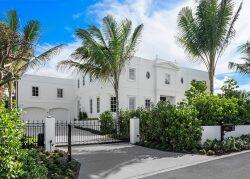Many millennials are well into their careers and enjoying higher incomes, and in normal times, would be poised to take their next leap into adulthood: buying a home.
But the booming housing market has left little inventory and pushed up prices, leaving the remaining supply out of reach, even for higher earners. Inflation also has made it difficult to save for a down payment.
So, high-earning millennials are increasingly turning to rentals. Out of a total U.S. millennial apartment applicant pool this year, 43 percent earn more than $50,000, up from 36 percent in 2020, according to a report from multifamily listing and research firm RentCafé.
This year, millennial renter applicants’ median income reached $45,744, up by nearly $4,300 from 2020, according to RentCafé. Millennials are defined as those born roughly between 1981 and 1996.
“Wages and salaries are up, but not up to the degree that housing prices are,” said Doug Ressler, a business intelligence manager at Yardi Matrix, a RentCafé sister division that provides data and analysis.
The South Florida housing market for decades has notoriously catered to billionaires and millionaires, while pricing out mid- and even higher-earners. The issue exacerbated over the past year and a half because of the demand by out-of-state buyers during the pandemic.
Read more



Miami overtook Los Angeles as the second most expensive market in the U.S. in September, with Miami households spending 81.6 percent of median income on homeownership costs, according to RealtyHop.
So what are South Florida millennials to do? Many are opting to rent in the small, unlikely Broward County city of Coconut Creek.
More than half, or 55 percent, of millennial apartment applications in Coconut Creek this year came from earners of over $50,000, a 23 percent increase, year-over-year, according to RentCafé.
“Coconut Creek has larger unit configurations. The older millennials are starting families, so they are looking for larger units,” said Ressler, of Yardi Matrix.
With a population of more than 60,000 in western Broward, the suburban municipality also offers complexes with more green space and amenities.
At the Waterview at Coconut Creek garden-style complex, one- and two-bedroom units range from 800 square feet to 1,123 square feet, according to Apartments.com.
Nuveen, a subsidiary of financial services provider TIAA, bought the 192-unit Waterview complex at 3621 Hillsboro Boulevard for $46.5 million in April.
The complex is part of Nuveen’s Coconut Creek portfolio, consisting of four properties, all boasting rent growth and demand over the past year.
“The main drivers for the strong performance are population and job growth driven by employer migration to South Florida,” Carlos Burneo, Nuveen senior director for the Americas housing sector, said in an emailed statement. “We have experienced a significant number of applications from families and individuals coming from out of state.”
Its rental portfolio’s occupancy over the past year has been roughly 96 percent, Burneo said. That’s in line with Coconut Creek’s occupancy, which Ressler pegged at 96.5 percent.
Other South Florida cities also saw higher apartment demand from well-heeled millennials. In Miami, 16 percent more millennials earning over $50,000 applied for rentals this year compared with last, RentCafé reported. West Palm Beach saw 14 percent more, and Boca Raton, 4 percent more.
A reprieve in South Florida housing costs is not expected soon, as the region’s incomes have historically lagged the booming real estate market. The median home listing was $549,000 in September, with the median household income $39,000, according to RealtyHop.
Nationwide, U.S. home prices rose 19.5 percent in September, year-over-year, compared to 19.8 percent, year-over-year, in August, according to the S&P CoreLogic Case-Shiller U.S. National Home Price Index.
